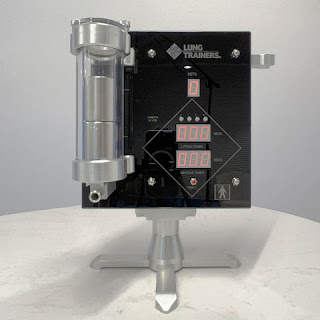How a Basic Breathing Exercise Can Reduce Stress
With mindfulness of the breath, the body may heal, regenerate, detoxify, and release tension. Learn how to relax your body and mind using simple breathing methods by reading on.
The breath is designed to serve as a balancing mechanism, a tuning fork that offers you conscious control over your emotions and access to profoundly peaceful and harmonious states. The door to empathy and comprehension for all living creatures can be unlocked with a single breath. Why? You can connect with your inner self when you experience the peace and tranquility that comes with breath awareness. You can convey people's empathy, care, and concern while being composed and serene.

Breathing exercises equipment can help you calm your mind and deeply nourish, oxygenate, and cleanse the cells and tissues of your body.
Rushing around prevents you from connecting with others, breathing, eating, or caring for yourself in any other way because it keeps you too busy and irritated. Over time, I've observed that other people don't like stressed-out people. They are abrasive, selfish, and awkward around other people. They are denied the complexity and richness of life. Stress deprives us of the pleasures of everyday life and can drive us to rant about minor inconveniences that balloon into mountains of self-obsessed idiocy and irritate other people.
Deep breathing exercises feed personalities, whereas stress destroys them. It may be one of the best yet least used tools for personal use.
Deep breathing also detoxifies the internal organs. The diaphragm supports the heart by massaging the internal organs as it draws down to breathe deeply and then vigorously pumps blood back up to the heart and lungs for more effective cleansing and re-oxygenation.
Deep breathing triggers the parasympathetic switch, which strengthens and activates the body's inherent cleansing, regeneration, and repair mechanisms. Your body sends messages to stop the "fight or flight" reactions triggered when you are under stress and breathe more slowly and deeply.
The issue with the rush and bustle of modern life is that, to some level, your body might believe you are constantly stressed. Suppose you tend to breathe quickly and shallowly. In that case, your neurological system might not receive the cue to "stand down," which could cause you to quickly exhaust your energy reserves by always remaining attentive.
That standby status also maintains the adrenaline coursing through your veins while inhibiting your digestive system and generating excess heat and acidity in the body, two major causes of disease and degeneration.
According to the Vedas, life expectancy is measured in breaths, and breathing rate and lifetime are directly correlated. If you breathe quickly and deeply, you will be wasting your energy. You exhale like a fish out of water.
You can conserve your life energy and relax your spirit by calming your breathing.
Translating to "energetic effort" or "breathing skill," diaphragmatic breathing is a basic type of breathing taught via yoga and lung capacity machine exercise. It may be learned and practiced rapidly and without extensive instruction.
Regular practice also teaches you to be more aware of your breathing, or at the absolute least, how to rapidly calm down and recover from stressful situations and emotional disturbances. 10 to 15-minute sessions each day are sufficient to alter your life significantly.
Source Url :- https://sites.google.com/view/lungtrainers01o/home

Comments
Post a Comment